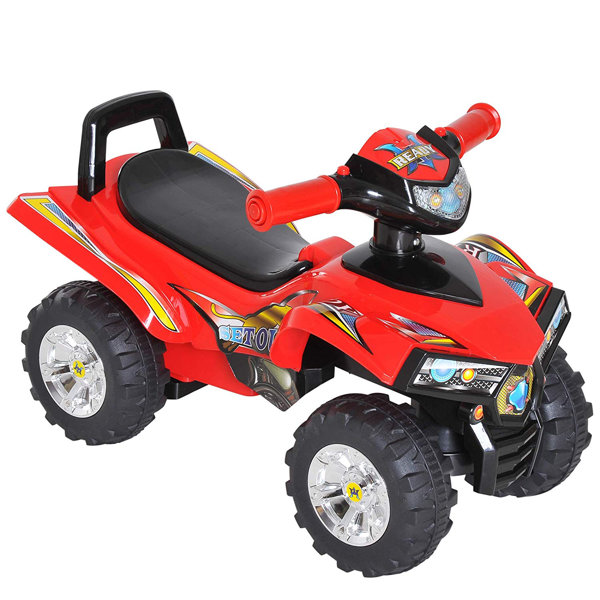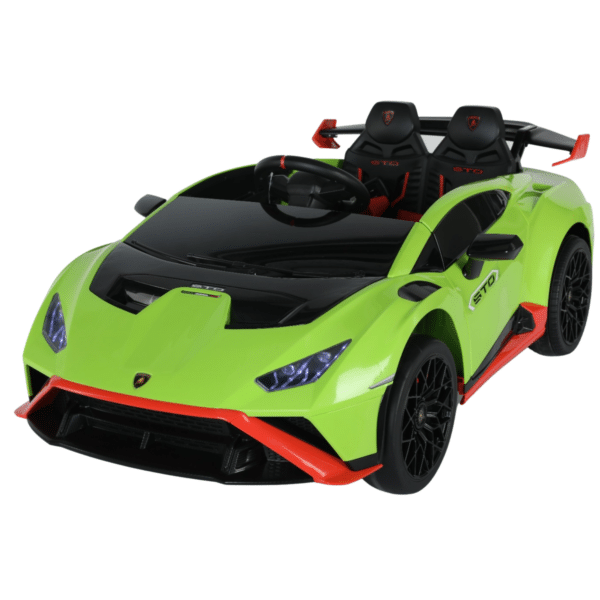Recommended Facts On Selecting Kids Cars
Recommended Facts On Selecting Kids Cars
Blog Article
What Is The Battery Life Of An Electric Ride-On Kid Car?
Understanding the charging time and the battery's life span for children who ride electric on their' car will help you ensure that the kids have uninterrupted play time. Here's what you need to know to know about the type of battery.
The majority of electric vehicles for kids are powered by rechargeable batteries. They are either lead-acid or Lithium-ion. Lithium-ion batteries typically have longer battery life and faster charging times compared to lead-acid batteries.
Battery Capacity
The size of the battery that is measured in amperehours (Ah) or watthours(Wh), will determine the length of time a vehicle can last on one charge. Batteries with a higher capacity provide a longer playing duration before the need to recharge.
Run Time -
The duration of the run is the highest amount of continuous operation that an electric ride on car can achieve with one charge. This varies based on a variety of factors, including battery capacity, motor power, terrain, as well as the weight of the driver.
Typical run times for electric ride-on vehicles range between 30 minutes and 2 hours with just one charge. Some battery packs with higher capacity can provide longer run times.
Charge Time
The charging time refers how long it will take to charge a completely exhausted battery. Charging times vary based on battery capacity, charger specifications, and charging methods.
In general the time to charge electric vehicles is between 8 to 12 hours. Some models, particularly ones with lithium-ion battery technology might have faster charging times.
Follow the charging guidelines given by the manufacturer to ensure the safety of your battery and its long-term durability. Incorrect charging or overcharging the battery could alter its performance and extend its lifespan.
Charging Method
Electric ride on vehicles are often equipped with chargers that plug into a standard home outlet. Some models are equipped with fast-charging features or smart chargers that monitors the state of the battery, and then adjusts the charging rate accordingly.
To avoid any harm to the electrical system or battery make sure that the charging connector and port you are using are compatible with chargers provided in your ride-on car.
Batteries Additional
Certain electric ride-on vehicles may offer the option to purchase additional batteries, or even spare batteries to allow for longer playing time. A supply of batteries lets you swap out depleted batteries for fully charged ones, which reduces the amount of time between sessions.
When you understand the battery's time and charge times of an electric ride on kids' vehicle You can be sure that your kids will enjoy fun and uninterrupted playtime while exploring their environment. It is important to charge the battery as often as you can and adhere to the correct charging practices. This will increase battery performance. Have a look at the top rated Lamborghini kids car for blog advice including two seater childrens electric cars, car on ride, digger ride, cars pedal car, electric car ride, remote control childrens car, toy car, toy with car, ride a toy, ride on toy and more. . 
How Can Kids Car Models Be Used Indoors And Outdoors?
Cars for kids have specific features and characteristics to suit different environments and usage situations, whether indoors or outdoors. These are the main differences between these models - Indoor Use Cars
Dimensions and Weight Cars that are designed for indoor use tend to be lighter and less bulky to be maneuvered easily in small spaces like living rooms, playrooms or hallways. These cars are small and compact, allowing them to maneuver easily through narrow spaces or around corners.
Low Ground Clearance: Indoor-use cars have a lower ground clearance, which means they won't be snagged or stuck by obstacles such as rugs, thresholds, or carpets. This allows for smooth and uninterrupted movement across indoor surfaces without fear of becoming stuck or falling over.
Smooth Wheels The wheels of indoor cars are usually composed of smooth materials such as rubber or plastic. This creates stability and grip on smooth surfaces such as flooring made of hardwood, laminate floors, or tiles. They are specifically designed for indoor use to minimize noise, and ensure that surfaces are protected from scratches.
Tempo Limit - Cars in indoor environments tend to be restricted in speed to permit safe and controlled driving in small space. This can help to prevent collisions and accidents with furniture, walls or other objects found in indoor spaces.
Outdoor Use Cars -
Built to Last - Vehicles made to be used outdoors are constructed with durable materials such as hard plastic or even metal that can withstand rough handling and elements of the outdoors such as sunlight, moisture, and temperature fluctuations. They are less prone to be afflicted by tears and wear that result from exposure to outdoor environments.
High Ground Clearance Outdoor-use cars have a higher ground clearance to take on bumps and uneven terrain that is encountered outside. This enables them to maneuver over rough surfaces such as gravel, grass or dirt without becoming stuck or damaged.
Traction Tires -- The tires that are used on cars that are used outdoors often include treads or patterns that are designed to increase the grip and traction of vehicles on surfaces that are slippery or uneven. This helps to maintain control and stability while driving on rough terrain.
Weather Resistant Components - Cars designed for outdoor use could contain weather-resistant parts, like sealed electronic components with waterproof casings, or the rust-resistant materials. These components safeguard the car from moisture and environmental damage. They are able to withstand rain, mud or puddles and still perform.
Outdoor cars are typically quicker to take advantage of the wide open spaces and the longer distances that are encountered in the outdoors. Children can enjoy a more adventurous and thrilling experience on the road.
These features and traits will help parents choose the right kids' car to meet their requirements for use and their environment. Read the best read more for Audi kids car for more advice including two seater childrens electric cars, childs car toy, a toy car, a toy car, two seater electric cars, childrens electric cars, childrens electric cars, a toy car, ride a toy, ride of car and more. . 
What Factors Should I Be Thinking About Before Purchasing An Electric Vehicle For My Kids? What Are The Advantages And Cons Of Electric Vehicles For Children?
Take note of these points before buying an electric vehicle for your kid to ensure you purchase the right model to fit your child's needs. Here are some important considerations to take into consideration, as well as details on the dimensions, price, pros, or cons.
When choosing an electric car to your child, think about the size and age of your child. Children who are smaller or younger might prefer lightweight, compact vehicles. However, older children and people with larger bodies may need larger vehicles that can be able to accommodate them in a comfortable manner.
Car Dimensions and Weight
Electric kids' cars are available in different sizes, from small, micro-sized models to larger-scale replicas of real vehicles. The weight and size of your child's car must be determined by their age, size, and strength. Also, consider how much space is available for play and storage.
Price Band
Electric kids' cars are available in a broad range of prices depending on the dimensions, features and brands. Prices vary from $50 to $200 for micro-sized replicas, while higher-end licensed replicas cost $200-800.
Pros & Pros and
Pros -
Children's electric vehicles provide hours of entertainment, creative play, and the chance to drive their own vehicle.
Motor Skill Development - Operating an electric car helps children develop coordination, spatial awareness and fine motor skills.
Electric automobiles encourage physical activity and outdoor playing. They promote the pursuit of exercise and adventure.
Realistic Details - A lot of electric children's vehicles come with real details such as working headlights MP3 player compatibility, and sounds from the horn. These features improve the experience of playing.
Cons
Cost - Quality electric cars for kids can be costly particularly if they're licensed replicas.
Battery life – Electric cars use rechargeable batteries that power their motors but these batteries may have a limited lifespan and need regular recharges.
Safety Risks - Electric vehicles can pose safety risks such as falls, collisions, and entrapment, if not handled with caution and with the supervision of an adult.
Maintenance and Assembly - Some electric cars require assembly upon arrival and maintenance on a regular basis such as cleaning, battery care, and occasional repairs or part replacements.
Accessories and Features
Check out the available features and accessories for your electric kids' cars, including horns that work with seatbelts, storage compartments, and parental remote controls. Pick a model with the options and features that fit your child's needs.
The ideal electric vehicle for your child will depend on the factors of their age and size and also their preferences and budget. Check out reviews, compare models and weigh the pros and cons prior to making the final choice. Read the recommended remote control childrens cars kidscars.co.uk news for more info including electric toy car, toy ride, ride on toy, riding digger, toy a car, car electric ride on, car electric ride on, riding digger, childs car toy, childrens electric ride on and more. .